5 Ways to Begin Switching to Solar Today
This post may contain affiliate links. Read our disclosure policy here.
5 Ways to Begin Switching to Solar Today
One of our goals here on our little modern homestead is to switch to solar/wind power….eventually.
Have you seen the price of a solar power system? Just one decent panel is not really within my budget and to be able to switch over our house as it is now to solar? It would never happen! $$$$ 🙁
We’ve done a fair amount of research over the years about making the switch. Even though it’s in our future and it’s pretty easy to see that it’s a step by step process and not something that you can do all at once. But as each piece of the puzzle fits together we can begin to see how solar or wind power can be a reality in our future as it can be for yours.
It’s all about taking one LITTLE step at a time and today I’m going to share some of those steps with you. Things that you can start working on today!
If you are looking to take small steps towards simple living, I would highly recommend my workbook, 31 Days to Simpler Living to get you started. It contains steps that anyone can take (no matter where you live) to get on the path to a simpler life.
Gain Awareness
1. Start with becoming aware of what you are actually using for power. You can’t know what to switch over to alternative power sources if you don’t know what all needs electricity to run in your home.
You can’t know what to switch over to alternative power sources if you don’t know what all needs electricity to run in your home.
Now, by this I don’t mean that you need to know simply what appliances you have in your home…you need to become aware of all of the little things that take up all of the electricity, not just the big things. For this research I recommend using a Kill A Watt. The Kill A Watt is a simple device that you plug into an outlet and then you plug your appliances (or anything with a plug) into the Kill A Watt. By pushing a button it will tell you how many watts the device is using. By learning that information you can then estimate how many kilowatt hours the appliances is using per month and how much the device draws as a total. (These are the night lights I’ve pictured above. They are really nice to keep in the bathrooms at night and take almost no wattage to run.)
If you want to, take it a step further by multiplying that kilowatt number by what your electric company charges per kWh and you will then know exactly how much that device is costing you per month. Sometimes this number is a little scary!
Do this research on every item in your house that you have plugged in, even items that are constantly plugged in, like a laptop or tablet. You might be surprised at the items that are drawing power without even being turned on. You may realize that you have more things that are drawing electricity than you really need to have on or plugged in and you may find items that are drawing an exorbitant amount of power that you could do without or replace with a lower power item. Having this knowledge is a big step on switching over to solar or wind power.
Start Small
2. Start with small things that can take batteries.
Maybe you have a few things within your home that you currently have plugged in but they could run off battery power instead. But battery prices can add up so you’ve decided to plug them in rather than use the battery option. It’s time to change the way you think about running those items!
You can pick up a simple solar battery charger on Amazon. This one is nice because it can charge all sizes of rechargeable batteries. We’ve started with this one that only does AA and AAA batteries because that’s mostly what we use at the moment. Amazon also carries quite the array of rechargeable batteries so you should be able to find several sets that are affordable. Right now we have 20 AA rechargeable batteries. That has been enough to supply us for what we are currently using as well as enough to have a few extras on hand without having to wait to charge those that we are currently using.
We use our rechargeable batteries with our weather radio (We have this Sangean Weather Radio) and with our white noise machine (We have this one from Homedics and it does take batteries.), and our walkie-talkies. Any additional small appliances that I will purchase I will be checking that it can take batteries first since now that basically costs me nothing to run.
This is a really easy and inexpensive way to start removing many of your items from the grid and as a bonus, you won’t have to pay for electricity to run them anymore!
Keep the Lights On
3. Start with some simple solar lanterns.
Of course, lighting is more important in the winter when the days are shorter so it’s hard to think about this much right now. We’ve had solar lanterns for quite some time now as I purchased them several years ago for some basic emergency preparedness. Learning to get used to using solar lanterns can be helpful now. Even if you have some overhead lights in your home powered by alternative power eventually, the lanterns can really help cut down on your overall energy consumption.
Of course, I haven’t tried out all of the solar lanterns on the market, but our favorites are the lights from d.light. We’ve used them for many years now and feel that they are well worth the low price for the quality that you get. We have a few of the lanterns, one of the task lights, and the large light and cell phone battery charger. If I had to pick a favorite I would go with the large light/battery charger. We like the amount of light that it puts off and I love that it has the dual purpose of charging your cell phone.
Be Inconvenient
4. Make things really inconvenient.
Yes, I still have a microwave. No, I don’t like that we still have it but it makes warming up a quick lunch really convenient. As part of our steps towards solar power, I want to make these things that we are using but don’t really need, very inconvenient and defeat their own purpose of being a convenience item. Once they’ve become something that I’m rather annoyed to use, I’m more likely to stop using it or find an alternative to use in its place.
So for the microwave I’ve simply gone ahead and unplugged it. I still use it now and then, but plugging it in is inconvient and rather annoying so I definately have slowed my usage to about once a day. Plus I’m saving a bit of money because since my microwave has a clock on it, it’s not constantly drawing “phantom electricity” Bonus 🙂
What are some things that you have in your life to simply make it convenient?
One of my real struggles is the slow cooker. I just love that thing. It makes cooking a meal so easy and convient! But leaving an appliance on all day isn’t the best use of my wattage. So I’ve started using my dutch oven (on my propane powered stovetop) instead, except for the days that we are gone to town for most of the day. I also use it when I’m making broth.
Convenience items are hard to cut out. As you already know, the simple life isn’t really “simple”, and convience items can make life a little easier. Like everything else, it’s something that takes baby steps. You will have to continue to keep your ultimate goal in mind.
The Big Stuff
5. Start considering what you might do with your larger appliances.
You need to think about what you might do with those appliances that are your major power draws such as your fridge, freezers, oven, washer/dryer, etc. Don’t think you can live without any of these items? You may not have to…well, not exactly. Like I mentioned with the other items in this article, it just may be more about how you think of them. I will give you some examples of how we are working through these issues in our own home.
I love my clothes washer, I really do. I have no desire to wash my clothing by hand. I did that when we lived in an RV and it just did not work very well. Washing clothing was ok, washing towels and sheets was nearly impossible. So for the time being I’m not getting rid of my washer but I have changed the way we’ve used it.
We are now down to only 3 loads of laundry per week, with each load only lasting 15 minutes and we are only using the dryer once per week and we do not hang out laundry outside (because of allergy issues). It’s crazy what is possible when you really put your mind to it! I hope to have a full blog post up soon of how exactly we are doing this new laundry routine because it’s too detailed to add to this article for now. 🙂
I’m also having my hubby build me a solar oven. I’m also *hoping* to replace my fridge soon with a converted freezer. Once we complete those projects I will have more blog posts that I will link to here as well. I’ve got some goals for next year to work on building a solar greenhouse and a solar livestock tank heater. I think once you start working on the solar DIY projects it’s very hard to stop!
Which large appliances can you change your habits within your home? Which do you think you could live without and how do you go about making that change?
By the numbers…
I’m a numbers person. Are you? If so, you might be looking at the items I’ve outlined above and want how much it would cost you to do all of these changes today.
So for the small battery charger, rechargeable batteries, the Kill A Watt, and a solar lantern (currently) is:
$61.36
I don’t think that’s bad at all considering how many items are on this list that you can begin changing. Plus, you will start shaving money off your electricity bill when you are using things less. You will probably make that money back in no time flat!
Why is it important to switch to an alternative power by taking baby steps? Because big changes are hard to stick with. I’m not ready to not have a refrigerator at all, and I probably never will be. But by changing the way I use things, the way I do things, and the way I think about things, I can slowly adjust myself and my family to these changes as we move towards our ultimate goal of getting off the grid.
It’s not going to happen overnight. And I really don’t want it to. It would be too much all at once and we would have a hard time sticking to the new lifestyle. It’s exactly the same method that we used when we were beginning to live a simpler life. We followed several baby steps that moved us closer and closer to that goal without really thinking much of it.
Do you feel like these steps are doable for you? Are you working towards alternative energy sources?
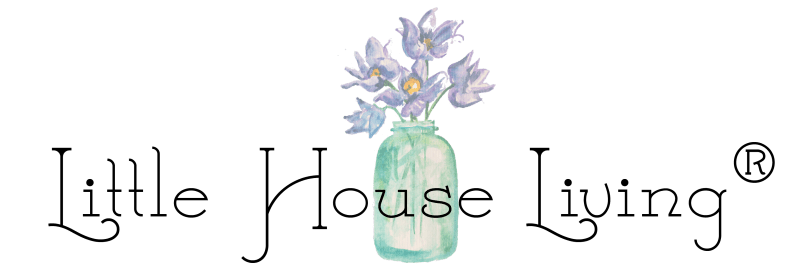
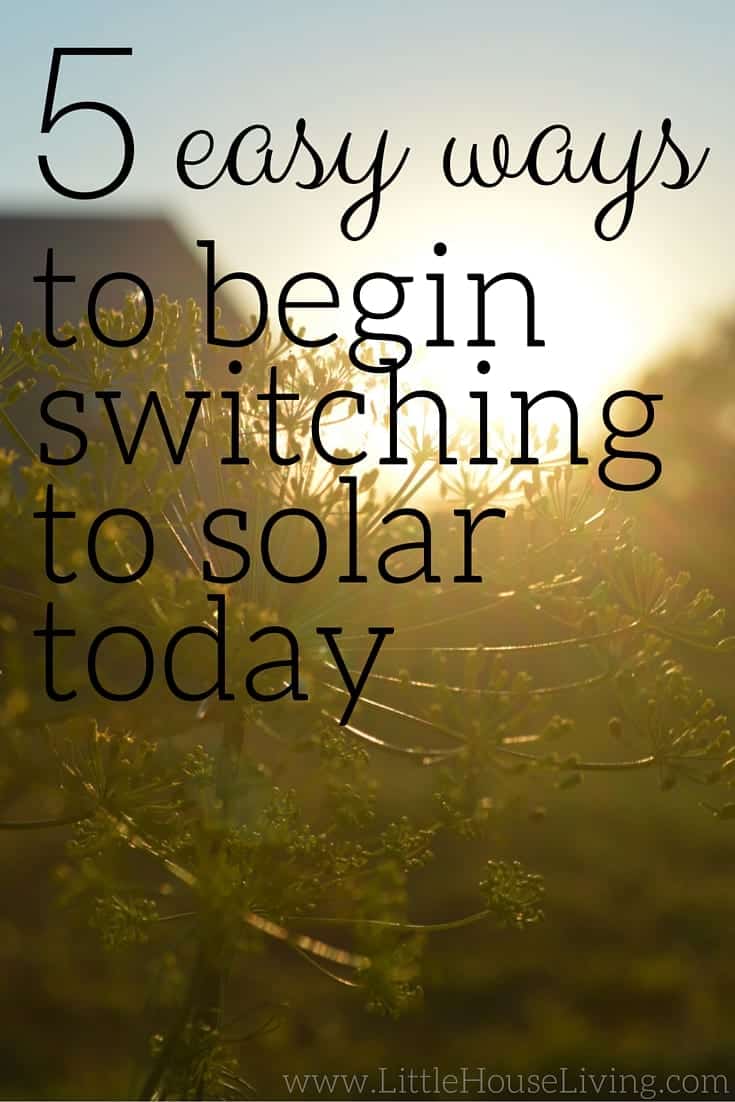
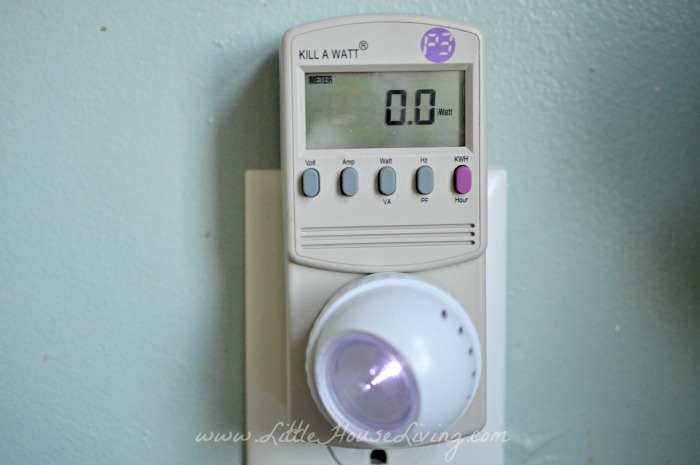
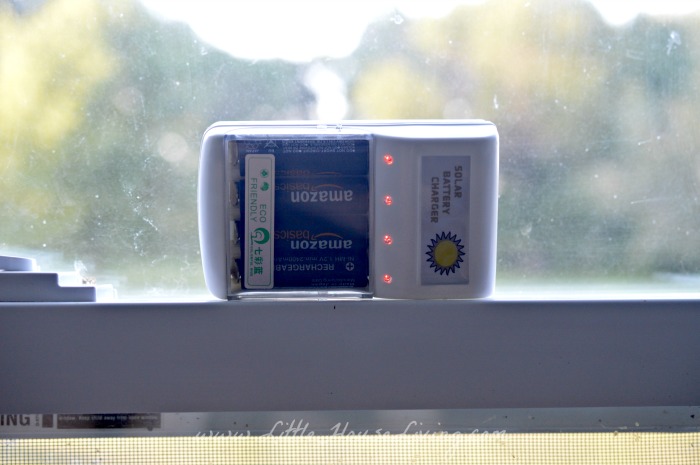

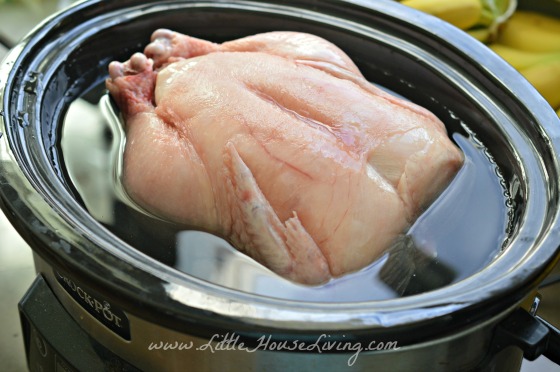
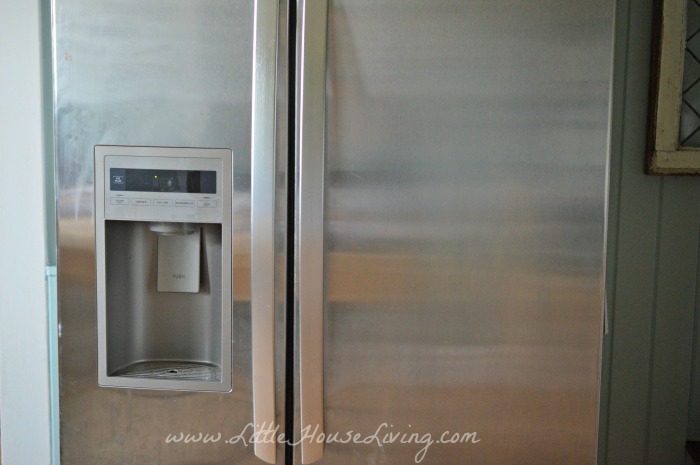



Hey Merissa! Thanks for your awesome website and for this post. We have also been looking to become more self-sufficient and have been researching alternative energy and energy consumption. I just wanted to share with you this little bit of research I found re: cooking appliances. It is from the UK but I believe is still relevant.
“The Centre for Sustainable Energy (www.cse.org.uk) estimates the average electricity usage of an electric oven between 2-2.2kWh, while a microwave uses between 0.6-1.5kWh. A slow cooker uses approximately 0.7kWh over the eight hours.”
So maybe you don’t have to let go of your slow cooker after-all?! It seems that most newer slow cookers use less electricity then a light bulb over the course of 8 hours of cooking time…
I would like to add another idea to keep in mind. I work at the public library and we have a kill a watt that you can check out for two weeks and use it at home for free. Something to check out if your library has. ☺
Great tip, thanks for sharing!
I would love it if my library had this. I will perhaps send it in as a suggestion. Thanks!
This is great news. You can definitely believe that I will be checking to see if my local library has a kill a watt. Thank you.
Nice post 🙂
It is really important to start slowly and with little things – one has to learn on its own how to save energy and then how to obtain energy from renewable sources …
I am considering getting rid of an old energy star refrigerator that is not very efficient. I am considering making shelving with leftover plywood for non-perishables etc.
Have you ever heard of a hay box? It’s an old timey, off grid approach to slow cooking and it totally works!
This video explains it well.
https://www.youtube.com/watch?v=8hm7IVGjVVA
I haven’t. Thanks for sharing!
I’ve found I use my pressure cooker more than my crock pot. Heat it on the stove until you hear the pressure cooker hissing noise then turn off the heat and let it cool down while on the burner. Everything gets cooked but only needs the energy to heat up, not to do the actual cooking.
In summer I begin to lower shades and curtains to block the sunny side f the house until the sun goes down. Even closing some windows and doors o the south and west until much cooler outside than inside temp. For winter I do the same in reverse opening south facing window shades and covering all windows with and insulated blanket just like a curtain,,. some made especially colorful to add fun during winter, this helps in cooling and heating, thus saving energy wheather solar or otherwise.
Hi, great article, thanks for the info. I have a question about your comment about getting rid of your refrig & going to a freezer, how will that work? What will you do with milk, cheese & other perishables?
We are going to convert the freezer into a fridge so we will still have a fridge but one that is much more efficient. And we actually no longer eat much dairy since 3 of us are allergic/intolerant so we have very little fridge food 🙂
Great article. We have decided that when an appliance (fridge, water heater, dryer)dies it gets replaced with a gas/propane version. We noticed an INCREDIBLE savings in our electric bill when the stove died and we replaced it.
Thank you for a truly wonderful article on slowly changing to solar power. I have started to change over slowly but your article has inspired me to make other small changes. Love your website and articles. Thank you.
What a great article!! I love your suggestions of doing things in baby steps.
We have a south facing front porch. When we replaced our old windows we saved them and are now enclosing the porch with the windows. In the winter it will help heat our home. In the summer we will open the windows and have a screened porch.
I have reduced our electric bill some by just going around unplugging clock radios, shuting down computer that is only used once a month to type on, so many unnecessary things. My garden is suffering also, tomatoes have split open now after the rains. Beetles are eating the leaves off everything. I have a 12 oz glass full of dead ones I picked off, put them in soapy water to kill them. Hopefully we can get a few peppers & cucumbers yet !
All your suggestions sound doable. There’s one item that I would be hard pressed to part with. Heating and A/C. I love me a cool house in the summer and warm house in winter (thermostat stays around 70°). Lung issues are also a factor so the heat and humidity in our region make it very difficult for me to breathe.
How do you keep all your indoor solar items charged? Do you have a charging station outside and move them out there every morning?
I have a few windows around the house that I use. Many of the items (once charged) hold their charge for a long time (especially the d.light lights) so we really don’t have to charge things up that often.
I never knew switching to solar was so attainable. One of the areas I’ve been exploring in my own home is reducing electricity. I might have to get me that rechargeable cell phone one though 😉
Hello,
I am a retires woman who ,for the life of me, can’t understand why solar is so darn unaffordable! It is my understanding that a lay person can’t even buy the panels! I would like to purchase panels to have installed by a knowledgeable person, that would cut the price by at least 50%.
Having solar power would help me financially in my later years.
Linda,
Any person can purchase solar panels. And the web is full of sites explaining how to install them, plus the inverter needed to convert the solar elec. to household current. Costco sells a complete house set up called “Grape”, and sites like Grainger and Harbor Freight Tools carry panels and all accessories. It is the knowledge to install that will cost you, unless you are physically able to crawl on the roof and lug those heavy panels up. They also require a frame to sit on and be anchored to. And any time you tinker with electricity, it is best to know exactly what you are doing. If your system is going to be grid tied, you must use a licensed installer, and there are building permit issues also. If you are going “off grid” you need to tie to a sizable battery bank using deep cycle batteries that need maintenance and occasional replacement. It can be done, but, just like this past weekend when it rained for two solid days, you must be prepared to have days when NO electricity is being generated. Do you have enough in storage to last, or will your house hold come to a cold, dark stop? Do your research and run the costs and take the leap if you think this is the way to go. Just cutting the cord on lots of your home energy hogs can initially save you while you are budgeting to go off grid. Good luck to you.
I’m glad I found your post. I thought I was the only one that didn’t like the microwave. Unplugging the microwave seems to be the best option to make it a bit hard to use. Your idea of taking baby steps is exactly what we needed. I pinned and shared it.
I put my microwave (along with many other things) on power strips that have on/off switches. I turn the microwave on during the heating process and it gets turned right back off again. No vampire electricity from that appliance!
Great tips! Thanks for sharing at Merry Monday!
please add updated laundry routine soon! I am very interested! thanks.
Great post! Solar is out the question for us right now too, but I like the slow transitions. Solar lights and the solar battery chargers are a really good idea.
I’d also love to hear more about your laundry setup! I’d rather not do hand laundry if I can help it 🙂
From
England, UK your information is inspiring and v helpful, thank-you
Like this, my husband and I are planning on working on going off the grid. We have lived quite simply when our children were young, we did have electricity and running water. But our only source of heat was our wood cook stove in the kitchen and a wood stove in the livingroom. I cooked on the wood stove in the winter and a phopane stove in summer. We didn’t have mircrowave. I had a washer and dryer but I hung my sheets and most of our clothes on the line outside. Love the smell! I’m ready for a simpler life style.
Well written and informative post. Thanks for sharing with us. Keep it up
This is a great blog post. I love how you added small tips that you can do to change over to solar. Small steps are better than no steps!!
I’m really interested in doing this! Thank you for all the great tips.
These are awesome ideas. Some of these I had not thought of. I will definitely try some of them. I like starting small.
Lots of great tips Merissa. We also prefer the power of tea lights in the evening for a romantic and practical evening dinner.